Have you ever wondered how easy it is to hand pollinate zucchini, cucumbers, or other cucurbits?
Cucurbits like cucumbers and zucchini are a garden staple for most growers. However, they can often have issues when it comes to pollination and fruit production. That’s why it’s good to know how to hand-pollinate – and it is easier to do than you might think!
Plants such as zucchini, cucumbers, pumpkins, cantaloupe, watermelon, summer squash, and winter squash are all part of the cucurbit family. These crops produce large fruit that grow along trailing or climbing vines. Cucurbits are also known as prolific producers.
Unlike tomatoes, whose flowers contain both male and female parts within the same flower, cucurbits produce separate female and male flowers. They are still considered self-pollinators, so only one plant is needed to produce fruit. However, cucurbits must rely on pollinators such as bees and butterflies in order to produce fruit.
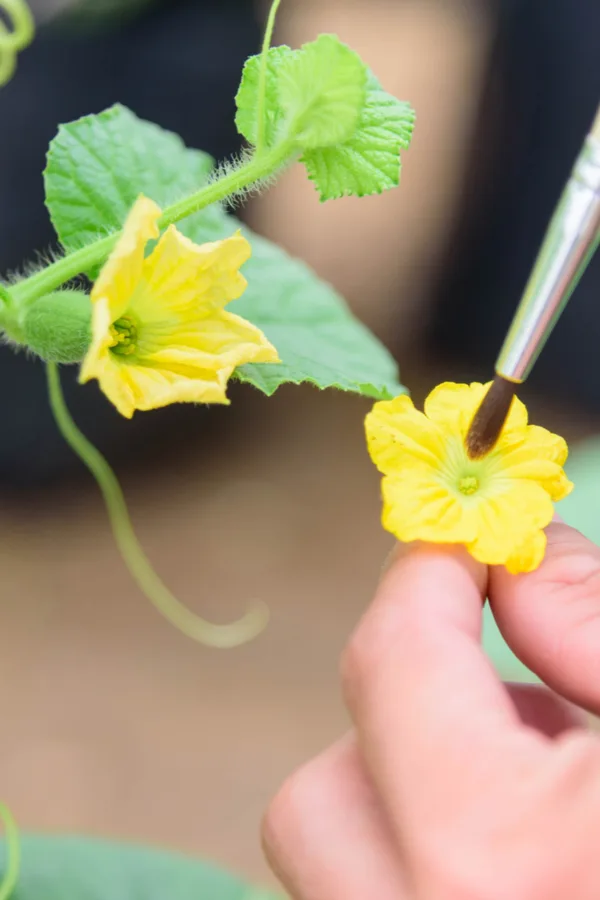
But what do you do if these plants appear to be producing multiple beautiful blooms but no fruit? Even if you are short on natural pollinators, you can still enjoy a wonderful zucchini and cucumber harvest. That’s where hand pollination comes into play.
Don’t worry – It’s a very simple process that requires few (if any) tools. This article will cover everything you need to know to have a successful zucchini and cucumber harvest this year!
Reasons For A Lack Of Fruit
There are many different issues that might be going on if your cucurbit is producing blooms but no fruit. Some of these issues have nothing to do with the health of your plant and can often be fixed by hand pollinating.
Lack of Pollinators
One of the most apparent reasons for a lack of fruit is the absence of pollinators. The presence of pesticides or other harmful chemicals around your garden or a neighbor’s yard may be preventing pollinators from visiting your property.
Be sure to avoid chemicals if at all possible to help make sure the bee population doesn’t diminish. Opt for more natural methods of treating your plants and foliage from diseases and pests.
In addition, a lack of pollen might also be the reason for few pollinators. Encourage these beneficial insects to visit your yard by planting flowers and other plants in your garden and around your landscape. The more pollen available to pollinators, the more likely they’ll stick around.
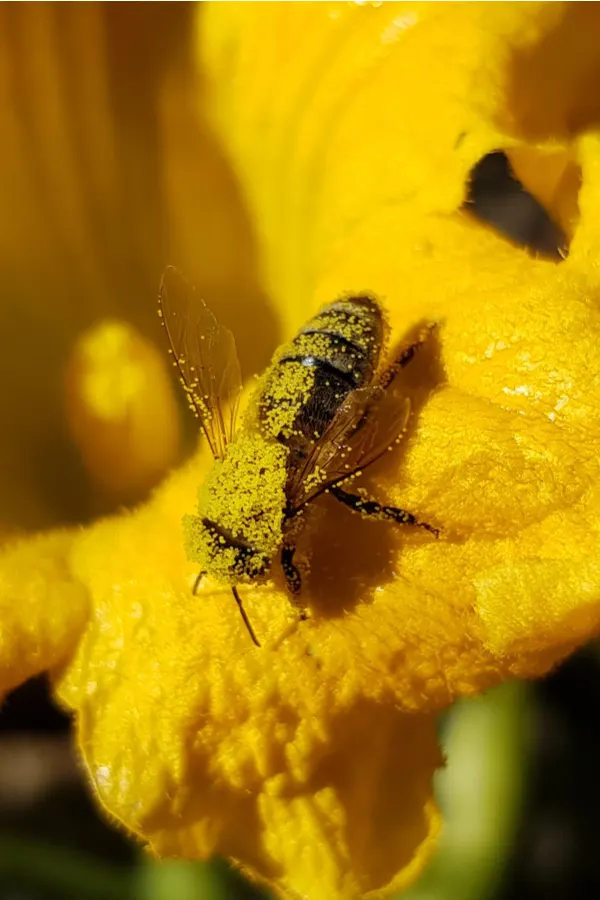
Poor Soil Conditions
If your soil is lacking in the nutrient department, your plants will struggle to grow and will likely start to drop blooms. Prolific producers such as zucchini and cucumbers need a lot of minerals and nutrients in order to keep on making fruit.
If none is found in the soil, the plants will spend energy on making foliage and no fruit. Or worse – stop growing all together. Amend lacking soil with compost or an all-natural liquid fertilizer. Also consider adding a green manure crop in order to help replenish nutrients during the garden’s off season.
Finally, rotating your garden’s crops will also help make sure the same plants aren’t constantly depleting the soil’s nutrients.
Water Issues
Maybe your location is going through a drought or you haven’t been diligent at watering. On the flip side, maybe you’ve had multiple constant days of rain. Both of these issues will poorly affect the production of blooms.
Be sure to keep a consistent watering schedule if you aren’t receiving enough rainfall during the week. As for excess rainfall, there isn’t a lot you can do to stop Mother Nature from doing her thing.
Covering plants might be an option, but you will also be keeping those pollinators away from your plants as well. Check out this article on “Gardening With Too Much Rain” for tips that might help.
Different Blooming Schedule
Another issue with cucurbit plants and a lack of pollination is their blooming schedule. Sometimes, there are no available male flowers to pollinate the female flowers when they are on the plant. Or, maybe there is an excess of male flowers and hardly any female flowers available.
Both issues will make it hard to produce fruit. Thankfully, hand pollination can help out since you can use one male flower to pollinate multiple female flowers.
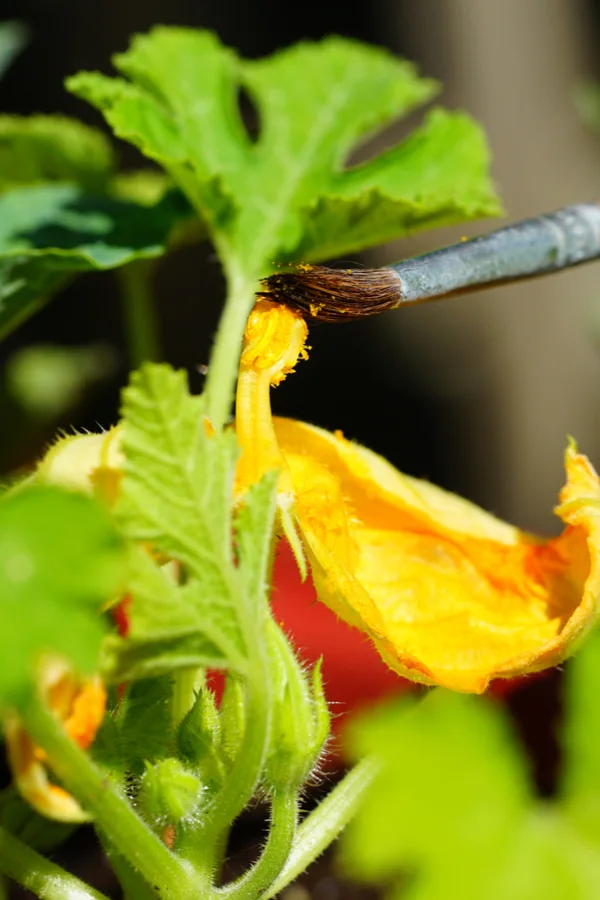
How To Hand Pollinate Zucchini and Cucumbers
While any plant in the cucurbit family can be hand pollinated, this article will focus on cucumbers and zucchini since they are a favorite amongst gardeners. The process of hand-pollinating is exactly the same for other cucurbits like squash, pumpkins, and melons as well.
What is Hand Pollination
Hand pollination is simply the process of physically taking the pollen from the male flowers of zucchini or cucumber plants and placing it on the female flowers.
You are essentially performing the task that a bee would do when they land on a male flower. They pick up pollen on their legs and body, and then fly to a female flower where the pollen falls off. However, you will be using either the male bloom itself or an item like a cotton swab, q-tip, or even a small paintbrush.
Step 1: Identify Male & Female Flowers
The first step in hand-pollinating zucchini and cucumber blooms is identification. In order to successfully perform the task, you need to be able to identify which flowers are the male flowers and which are the female flowers.
Typically, the first few flowers produced by a zucchini and cucumber plant are male flowers. They are often seen blooming in groups of three to five. Male flowers have straight, shorter stems. If you look inside the flower, you will see the stigma covered in a yellow, powdery substance. This powder is the pollen.
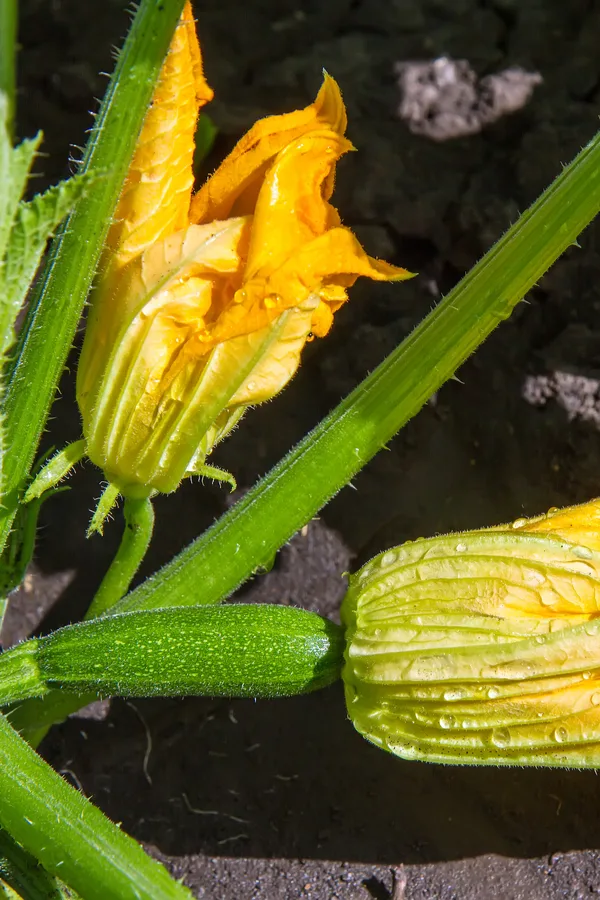
Female blooms, on the other hand, never grow in clusters. They will have slightly longer flowers and have what appears to be a swelling at the base of the bloom. This swelling is what will turn into the actual fruit if the flower is pollinated. Inside the bloom will be a stigma.
At first, the male flowers are useless and serve no purpose until the female flowers appear. You can actually eat zucchini blooms if you run into an excess of males early on. There are many different recipes online for stuffed and fried zucchini blooms.
Female blooms will appear a few weeks after the male flowers start to show on the vines. Eventually, both male and female blooms will be on vines at the same time.
Step 2: Performing Hand Pollination
Hand pollination should occur early in the morning while the flowers are open at their the widest. You can either cut the male bloom from the stem to perform hand-pollinating or use a small cotton swab, q-tip, or even a small paintbrush.
If using the male bloom, peel back the petals so the anther containing the pollen is easily seen. Go over to a female bloom and gently rub the anther against the stigma. One male bloom can pollinate multiple female blooms.
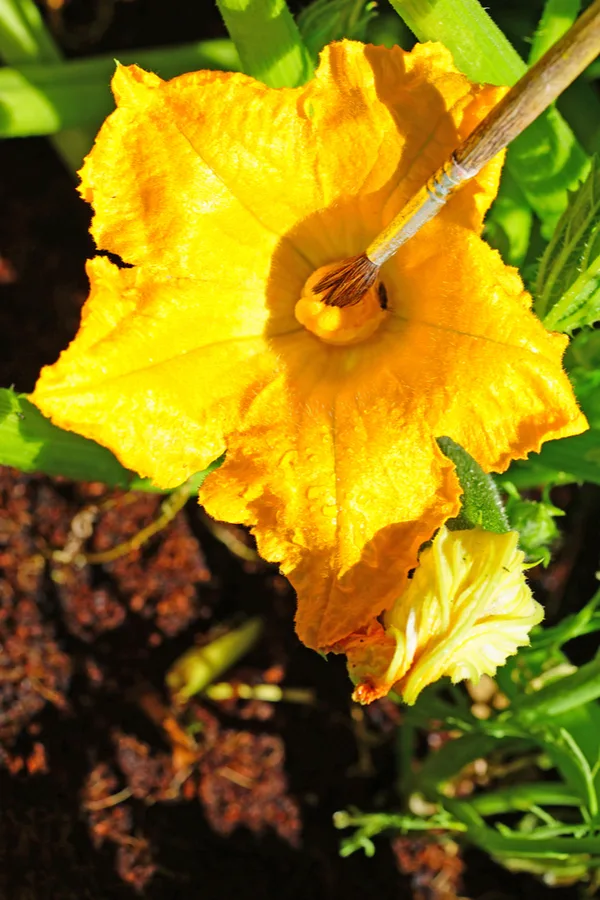
The process works the same way if you are using a different item like a paintbrush. Gather some pollen from the anther of the male flower onto the tip of the brush. Then, lightly brush the pollen onto the stigma of the female flower or tap the pollen off.
Repeat the process for remaining female blooms, gathering more pollen as needed from a male bloom.
That’s it! It’s really that easy to hand pollinate your zucchini or cucumber plants! If done successfully, you should start to see the swelling behind the female flower start to grow after a few days.
Before you know it, you will have a delicious fruit to harvest and enjoy – All because you gave your zucchini or cucumber plants a helping hand with pollination!
Follow Our Facebook Page For Even More Great Tips! Simple Garden Life Facebook Page
Simple Garden Life is a website dedicated to keeping gardening fun, simple and enjoyable! We publish two new articles each week along with a new garden podcast episode every two weeks. This article may contain affiliate links.
